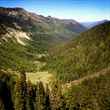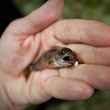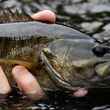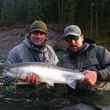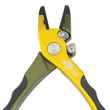In the lexicon of rock ‘n roll, there’s a term called a riff. The dictionary on my laptop describes it as, “a short repeated phrase, frequently played over changing chords or harmonies or used as a background to a solo improvisation.” I don’t have a musical bone in my body, but I’m going to imitate the guitar heroes of my youth and riff on a single word. Vision.
One of the things that sets the best fly fishermen apart from their less successful brethren is vision. Not so much visual acuity (although I’ll touch on that later), but vision with a small “v” - the ability to see and understand what’s happening on, and around, the water.
Vision, at least in this context, is interchangeable with words like “information” and “understanding.” You see something or, more likely, some complex combination of things, and you become acutely aware of what you’re witnessing. Just as importantly, you know what to do next. The rise forms are subtle and the mayflies are lying flat on the surface, so you reach for your 6x tippet and a little rusty spinner. The wind is pushing waves against a rocky point on your favorite bass lake, so you cast your Clouser Minnow right to the edge of the drop-off. The eddy behind the mid-stream boulder is sunny and shallow, while the small cushion in front is deep and shaded. Where’s that big rainbow likely to be holding? In front of the rock, of course ...





